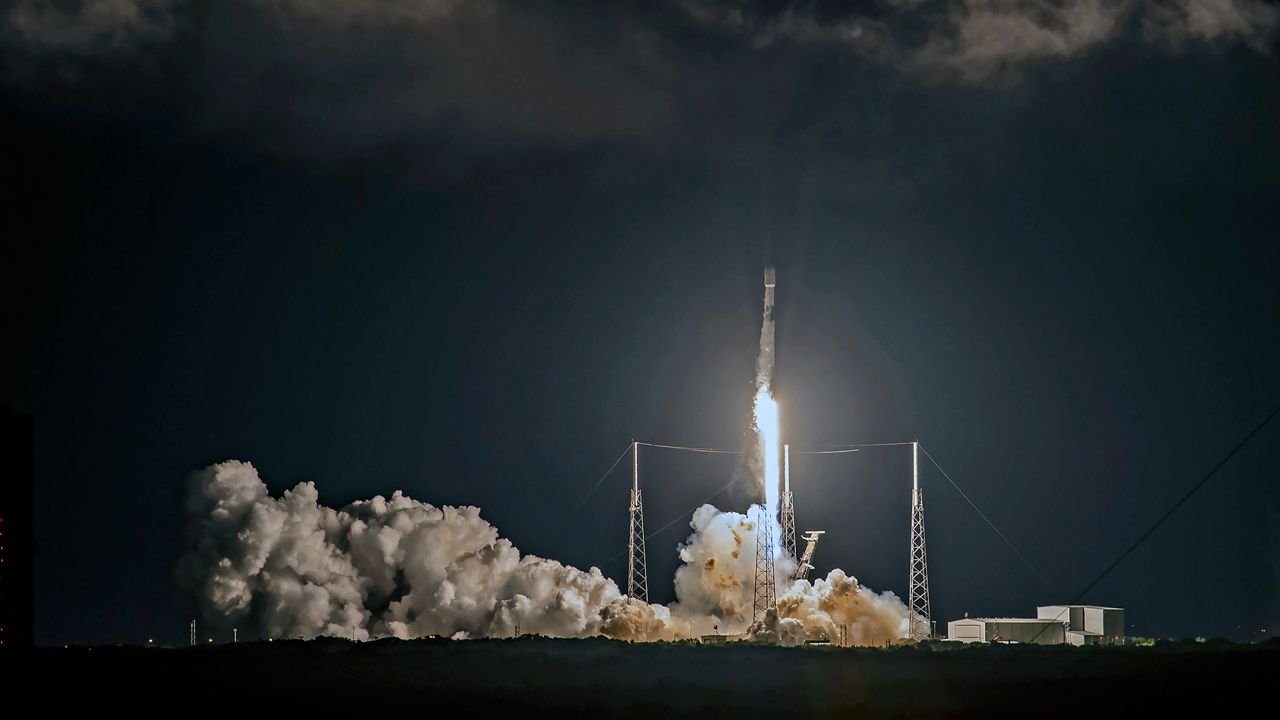CAPE CANAVERAL SPACE FORCE BASE — Many had hoped to see two launches on Thursday evening, but instead, they may see a double liftoff on Friday as SpaceX launched the Starlink mission first.
What You Need To Know
- SpaceX sent up 22 Starlink satellites to low-Earth orbit
- The next launch for Friday is SpaceX's liftoff of the JUPITER 3 mission
- RELATED: SpaceX attempts second launch of JUPITER 3 communications satellite
- Get more space coverage here ▶
- 🔻Scroll down to watch the launch🔻
Liftoff! pic.twitter.com/IkhDAaCc8R
— SpaceX (@SpaceX) July 28, 2023
At 12:01 a.m. ET, SpaceX’s Falcon 9 rocket sent 22 Starlink satellites to low-Earth orbit after it lifted off from Space Launch Complex 40 at Cape Canaveral Space Force Base on Friday, SpaceX stated.
For the Starlink 6-7 mission, the first-stage booster B1062 has 15 successful missions in its resume.
- GPS III Space Vehicle 04
- GPS III Space Vehicle 05
- Inspiration4
- Ax-1
- Nilesat 301
- OneWeb Launch 17
- Arabsat's Badr 8
- Seven Starlink missions (not counting this latest one)
After Falcon 9’s stage separation, the first stage landed on the droneship A Shortfall of Gravitas that was in the Atlantic Ocean.
Falcon 9’s first stage has landed on the A Shortfall of Gravitas droneship pic.twitter.com/Kp7GuMPbEK
— SpaceX (@SpaceX) July 28, 2023
Some delays, near-double launches
The Starlink 6-7 mission was originally scheduled to launch on Wednesday evening, along with the SpaceX launch of the JUPITER 3 mission. But weather and launch issues pushed both back to Thursday and then eventually Friday.
Thursday’s Starlink launch window was supposed to open at 10:20 p.m. ET and had additional backup times set for 11:10 p.m. ET, and 12:01 a.m. ET, Friday, which is when it launched.
The weather was a concern as the 45th Weather Squadron gave a 40% chance of good liftoff conditions for the Starlink mission.
The JUPITER-3 liftoff was supposed to follow the Starlink Thursday mission with a 11:04 p.m. ET launch but it has been moved to Friday at the same time.
Falcon 9 launches 22 @Starlink satellites to orbit from Florida on SpaceX’s 50th mission of 2023! pic.twitter.com/eGfwWHVkcj
— SpaceX (@SpaceX) July 28, 2023
About the mission:
The 22 satellites in the Starlink Group 6-7 mission joined the thousands of their mechanical brothers and sisters that are in low-Earth orbit.
The satellites provide internet services, stated Starlink, a company owned and operated by SpaceX.
Before Thursday night's launch, Harvard-Smithsonian Center for Astrophysics’ Dr. Jonathan McDowell recorded the following number of Starlink satellites:
- 4,519 are in orbit
- 4,487 in working order
- 3,768 are operational



